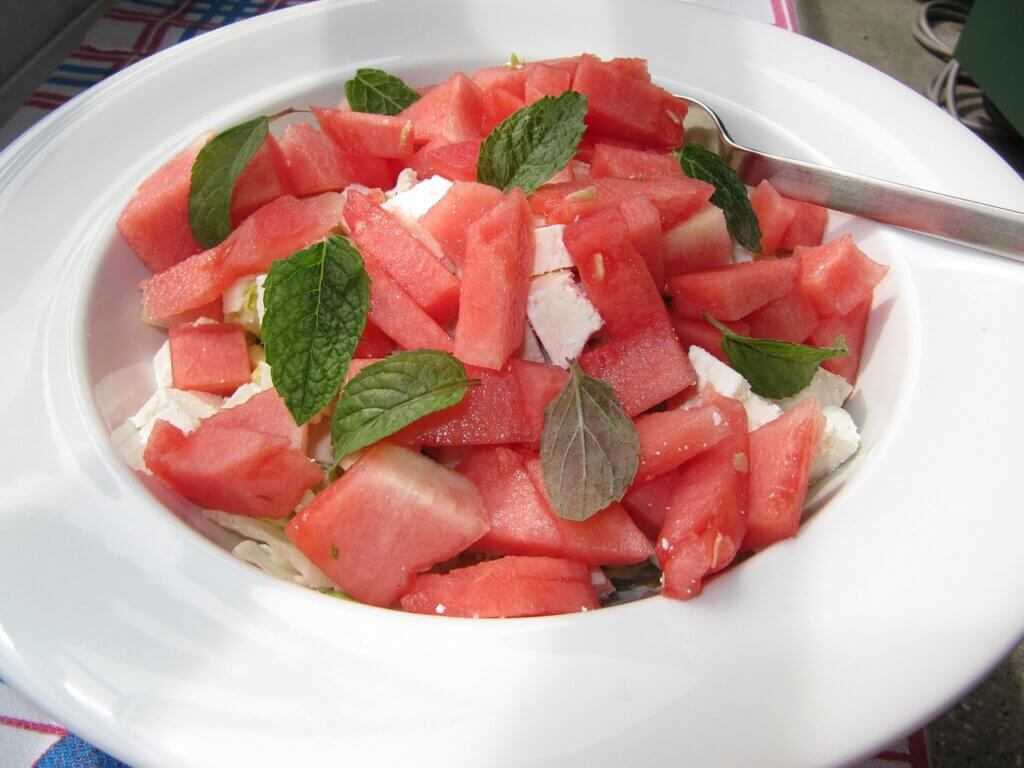When temperatures soar, you also need to cool down your plate: Feta is a reliable partner when it comes to summer cuisine – because the oldest cheese in the world not only tastes good, it also has few calories.
Sometimes a glance at the refrigerated section in the supermarket can cause a bit of chaos in your head: you’ll find sheep’s cheese, Balkan cheese, shepherd’s cheese and feta. But isn’t it all one and the same? No, it is not. Since 2007, only cheese that comes either from the Greek mainland or from the prefecture of Lesbos has been allowed to bear the name Feta. The protected designation of origin was and is important to the Greeks because it guarantees that the cheese follows the relevant guidelines. Which are: The sheep must graze on Greek pastures, and goat’s milk may also be used in the feta – but only up to a maximum of thirty percent. Milk powder, preservatives and the like are taboo in real feta.
Feta is so healthy
The Greeks produce feta in the traditional way: after the sheep’s milk has been flocculated, the feta is left to mature in brine for at least two months. This gives the white cheese its salty, sour flavor. Apart from milk, salt and bacterial cultures, there are no other ingredients in the feta – making it a real option for anyone who likes to eat healthily.
Sheep’s milk is also a real winner: with 5.5 percent protein, it is one of the most protein-rich types of milk, provides calcium and zinc as well as vitamins and has virtually no carbohydrates.
If you have doubts about the high salt content of feta, you can remedy this: Soak the cheese in water for about half an hour before eating – this reduces the salt content.

Purchasing and storing feta
Because, as mentioned at the beginning, not all feta cheese is the same, you should pay attention to the following when shopping: If the packaging says “Feta 40 percent” or “Feta 45 percent”, you are getting real Greek sheep’s milk cheese. However, if the name is simply “sheep’s cheese”, the product may also come from other countries such as Turkey or Bulgaria.
When it comes to storage, feta behaves like normal cream cheese: if you don’t eat the feta in one go, it is advisable to soak it in water. This will keep it fresh for 4-5 days.
Feta enjoyment cold or warm
The great thing about feta is that it can be enjoyed cold (in a classic Greek salad or with melon and mint), but is also ideal as a barbecue side dish (braised in aluminum foil with herbs) or for casseroles with Mediterranean vegetables or pasta dishes such as baked feta pasta.

Summer recipes
We have picked out a few delicious feta recipes for you for the summer – creative and tasty. Your family, friends & guests will love it!
Related posts:





![Home cooking reloaded incl. competition Christoph_Krauli_Held©Monika_Loeff_19285[1]](https://myhome.at/wp-content/uploads/2025/09/Christoph_Krauli_Held©Monika_Loeff_192851-580x420.jpg)







